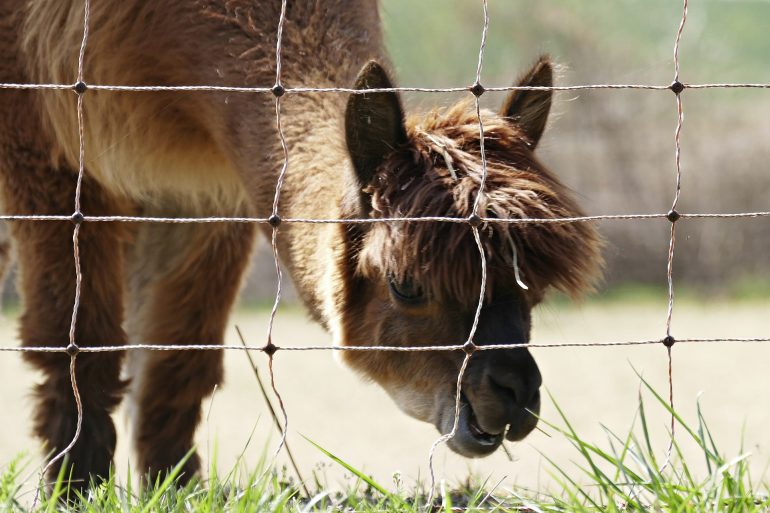Whether you’re using it on a smaller scale to keep predators out of your garden at night, or to secure your five hundred acre livestock farm, electric fencing offers an incredibly secure and effective barrier for keeping animals – and, and at times, humans – where they need to be, and away from those places they are better kept separated from. The only trouble is, any mistakes or damage can significantly undermine your electric fencing, and prevent it from doing the job it was designed to do.
While it is true that installing and maintaining an electric fence takes some work to get right, once properly erected, it will serve you for many years, and ensure that your land and animals are protected.
With that in mind, here are ten great tips for ensuring that your electric fence is ready to withstand the elements, offer a reliable and consistent current, and last well beyond that initial installation.
-
Save Time and Money: Source Good Quality Suppliers
As with anything in life, cutting corners or saving a small percentage of your initial outlay on cheaper equipment and materials will inevitably cost you plenty of hassle – and additional investment – in the future. Electric fences are no different. While good quality electric fencing will last for many years outside, the same can’t be said for brands that sacrifice quality for cost.
Similarly, when it comes to your energiser, investing in good quality equipment really is one of the most important factors to consider when it comes to building an electric fence that will last beyond a couple of seasons – and offer an unbroken current to the entire length and breadth of the enclosure. If it needs to be charged far more than it should, or is not capable of delivering a strong enough current to the fence, then you are much better off investing in a more powerful energiser.
-
Don’t Underestimate the Value of Insulators
Insulators should be used to prevent loss of current through your fence posts. Wrapping your tape, wire or rope around fence posts in order to maintain tension or manage a corner will only cause inconsistent charge along the length of the fence – and make it difficult to maintain a suitable level of tension across the entire enclosure.
Insulators are typically made of plastic, which can suffer from exposure to direct sunlight, and wear and tear from the movement of the fence. Choosing insulators that are UV stabilised will ensure that they are much better protected against the elements, and – if the fence is going to be under considerable strain – the addition of rubber pads will prevent the insulators from wearing down your tape, which will ensure a longer lifespan.
-
Ensure that it is Sufficiently Earthed
Earthing your electric current is essential to ensuring that your energiser is able to deliver a strong and consistent current to the entire enclosure as, when connected to your energiser’s earth terminal, it completes the electrical circuit.
If the ground into which your earthing stake has been placed is prone to drying out or freezing over, then drive it further into the ground where moisture levels are higher and – as a result, much more conductive – or by introducing some water into the ground yourself. Without proper earthing, animals will find that the fence delivers only a mild electric shock, and will likely lose respect for the fence entirely.
-
Ensure the Tension is Consistent
If your fence is suffering from poor tension, then the shock administered to an animal pressing against it will likely be delayed and, in time, they will lose a level of fear for the fence and that compromises its efficacy as a deterrent. Similarly, slack tape, wire or rope will also be easier for animals to jump over – particularly if they are no longer wary of the fence’s electrical current.
A consistent line of tension across the full perimeter of the fence is also essential to making sure that the circuit remains complete. If, for instance, you have a double line of tape, and the upper line goes slack and makes contact with the lower line, then you could experience a short circuit, which would prevent one of the lines from carrying the full current, and make it easier for animals to escape – or, of course, get in.
-
Keep Your Fence Away from Tall Grass
This is another common issue for electric fence owners – although checking to ensure that the grass is kept away from the wire, tape or rope needn’t take long, many people simply don’t realise how much of their current can be lost in this way.
When your fencing comes into contact with grass or vegetation, particularly when it is wet, the electric current will attempt to earth itself through this grass and, as a result, effectively ‘complete’ the circuit before it reaches your earthing stake. As a result, the current in the rest of the fence will be considerably weaker, and your animals will find it much easier to break through.
-
Don’t Put Too Much Strain on Your Fencing
If your fencing is pulled too tight, it will put a great deal of strain on the posts and, over time, weaken them against any pressure. It may also wear out your tape, rope or wire much faster, and undermine the entire fencing structure as a whole.
Your tensioning should be taught, without it placing any strain on the tape, wire or string or on the posts themselves.
-
Consider a Solar Fence Energiser
If your issue seems to stem from the energiser itself – for instance, if you feel that you are constantly having to recharge the battery in order to achieve a strong enough current to keep the animals secure – then investing in a solar energiser can make the world of difference. It will save you the hassle of connecting your energiser to the mains, or keeping the battery continuously charged.
Solar is one of the most influential technologies available to us today, which means that the technology for improving its efficacy as a tool in our everyday lives is constantly improving. Now, we are able to utilise solar power for electrical fences with energisers capable of storing excess energy for weeks at a time, ensuring that your fence will remain powered even when the sun is no longer shining.
-
Ensure Your Animals Are Aware of the Fence
Electrical fencing – particularly wire – can be less visible to animals, and may not offer an effective visual deterrent. Even if they are frightened off by the sensation of the electrical shock itself, they may need a little more help in spotting the fence before they place any strain on it and, in time, wear it down.
Horses, in particular, can be more prone to overlooking a fence, and it is common practice among horse owners to opt for a more visible line of fencing, such as white electrical tape, rather than the more aesthetically-pleasing green tape.
-
Purchase a Voltmeter
Regular maintenance means regularly checking the voltage running through your fence is strong and consistent at every turn, and, without a voltmeter, this simply is not possible. What’s more, it will likely be incredibly uncomfortable for you – particularly if you are on the hunt for an elusive short in the electrical current.
With a voltmeter, this process could not be simpler, which means that you will be far more likely to stay on top of checking the fence. This device is capable of reading the voltage in any area of a fence, and identifying any areas suffering from a weak current without allowing the fence to administer a shock to you.
-
Make it Vandal-Proof
Of course, with all the will in the world – and the best quality materials – there is always a risk that your fence will be vulnerable to tampering and theft from vandals.
While proper signage may act as a good deterrent to anyone considering trespassing on your property, it won’t deter anyone looking to steal anything left out in the open. An electrified box for your energiser and battery will ensure that your equipment is not at risk of theft. Not only will this keep your animals and land safe, but it will also prevent you from having to spend more on replacing lost parts and rebuilding your fencing.
Electric fencing is an excellent option for anyone looking to keep animals in or out of their property. The current is capable of administering a harmless shock perfect for deterring any animal interested in trying their luck at breaking through, and, once installed, it doesn’t require a great deal of maintenance. Whether you are having issues with your existing electrical fencing, or preparing to start building on from scratch, retain this guide as a helpful tool to ensure that you are always on top of the best approach to protecting your land.





